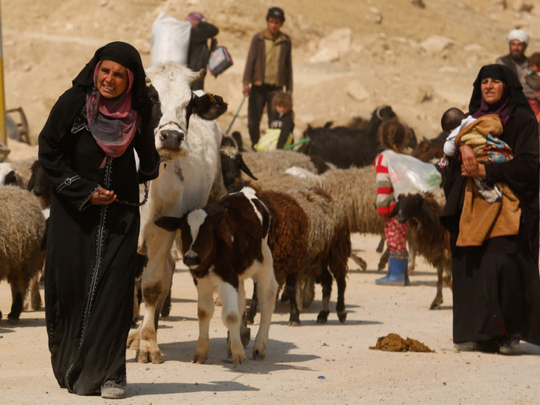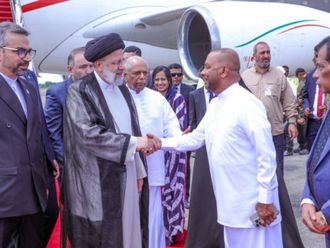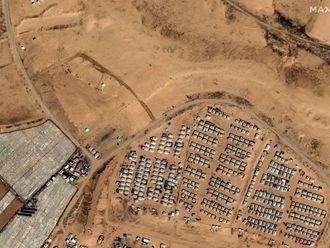
Near Mosul: Iraqi forces worked to clear bombs and flush out any remaining Daesh terrorists in recaptured areas of west Mosul on Wednesday to set the stage for an offensive against the Old City.
Supported by US-led coalition air strikes, Iraqi forces have made steady progress in their battle to retake Mosul, Iraq’s second city and the largest that was seized by Daesh.
Iraqi forces have recaptured a series of neighbourhoods from Daesh in Mosul as well as the provincial government headquarters and the museum where the terrorists infamously filmed themselves destroying priceless artefacts.
The militants are under mounting pressure from twin US-backed ground offensives targeting Mosul and their other main stronghold, Raqqa in Syria.
Daesh overran large areas of both countries in 2014, declaring a so-called “caliphate” in territory it controlled, but has since lost ground.
Iraqi forces launched the massive operation to retake Mosul on October 17, first recapturing its eastern side before setting their sights on its smaller but more densely populated west.
The militants have fought back with suicide car bombs, roadside bombs, snipers and weaponised drones.
The focus on Wednesday was on clearing the newly retaken areas and defusing bombs in booby-trapped houses, Lieutenant Colonel Abdul Amir Al Mohammadawi of the elite Rapid Response Division told AFP.
The battle for the Old City may see some of the toughest fighting of the operation to retake west Mosul.
“The liberation of the city centre is a first and very important step for beginning the liberation of the Old City,” Al Mohammadawi said, referring to an area near the Old City that Iraqi forces have recaptured in recent days.
“The Old City is a very difficult area” of narrow streets and closely spaced houses, he said.
Hundreds of thousands of civilians are believed to still be trapped under militant rule in the Old City, where Abu Bakr Al Baghdadi made his only public appearance as Daesh leader and proclaimed a “caliphate” in July 2014.
The fighting in west Mosul has forced more than 51,000 people to flee their homes, according to the International Organisation for Migration.
But 750,000 people are believed to have remained in west Mosul under Daesh, whose members have used civilians as human shields to defend themselves from approaching forces.
“We couldn’t go outside because of the IS [Daesh] fighters,” said Manhal, a 28-year-old resident of Al Danadan, a district now under Iraqi control.
“Those who went out were taken hostage. The fighting was very violent. Mortar rounds fell on our roof and inside our yard,” he added.
Security forces launched a major operation to retake west Mosul on February 19, but several days of bad weather slowed their pace until a renewed push began on Sunday.
Federal police commander Lieutenant General Raed Shakir Jawdat said anti-Daesh forces were now setting up defences in recaptured areas as they eyed the next phase.
“Berms and barriers were set up to protect [the] forces and they began search operations in Al Dawasa and Al Danadan and Al Agaidat areas to find [Daesh] remnants to prepare for the completion of offensive operations,” he said.
In Syria, Daesh has faced offensives by three rival forces.
Turkish troops and their Syrian rebel allies have pushed south from the Turkish border and driven the terrorists out of the northern town of Al Bab.
Syrian government troops have swept eastwards from second city Aleppo with Russian support and seized a swathe of countryside from the terrorists.
And a US-backed alliance of Kurdish and Arab fighters has been advancing on Raqqa.
On Monday they reached the Euphrates River cutting the main road to the partly Daesh-held city of Deir Al Zor downstream.












